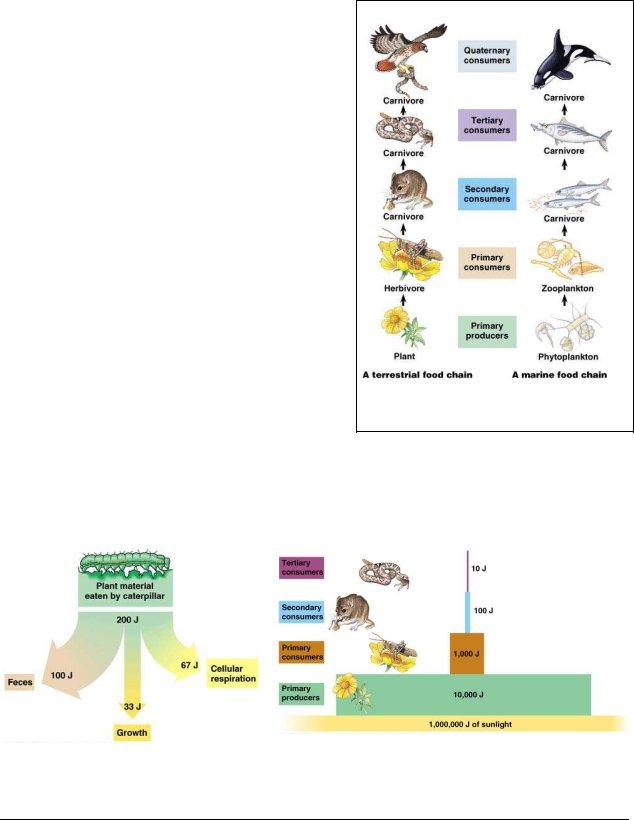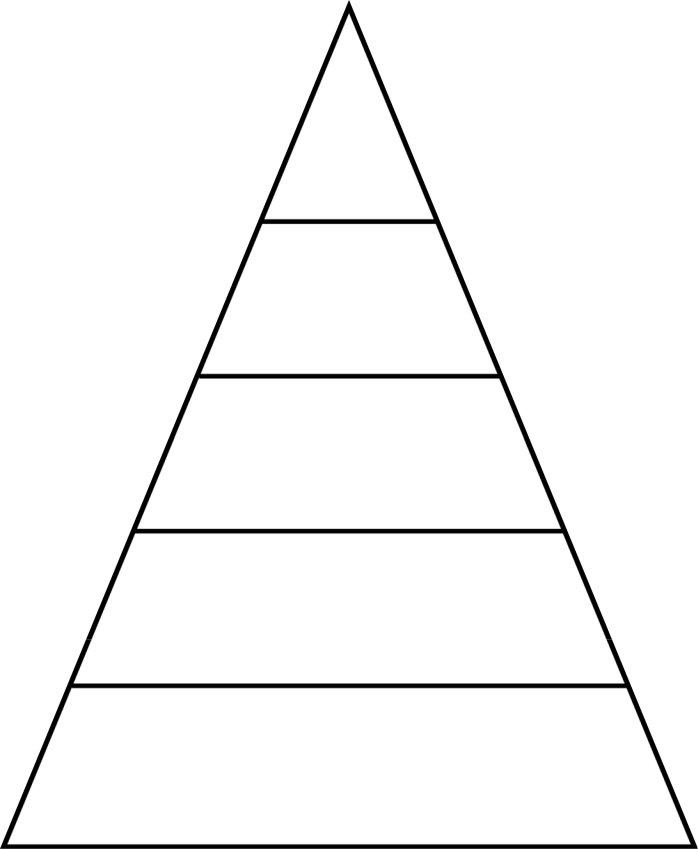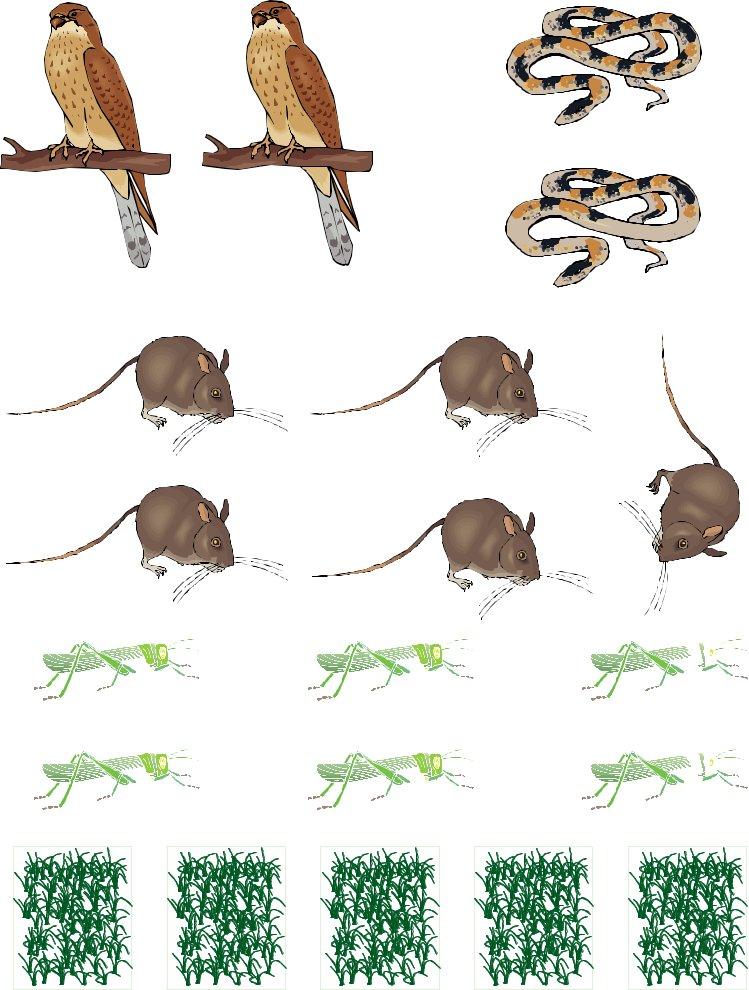The Regents Biology Lab Food Chains form intricately outlines the cascading relationships and energy flow within ecosystems through an exploration of food chains. Addressing the pivotal roles of producers, primary consumers, secondary consumers, and decomposers, this comprehensive resource offers a vivid portrayal of how energy and nutrients cycle through various trophic levels. Central to the form's educational aim is the demonstration of the sun's integral role in fueling photosynthesis in plants, setting the foundation for life's energy pyramid. Furthermore, it highlights the inefficiencies of energy transfer between these levels—a mere 10% of consumed energy contributes to growth, with the rest lost as waste or expended during cellular respiration. Accompanying activities, including the assembly of a food chain pyramid and the quantification of organism numbers across different trophic levels, facilitate a hands-on understanding of these concepts. The form also delves into the broader ecological implications of human impacts, such as pesticide use and habitat reduction, prompting students to consider the delicate balance of natural systems. Developed by Kim B. Foglia, this educational tool not only serves as an introduction to fundamental ecological principles but also engages students in critical thinking about the sustainability of ecosystems.
| Question | Answer |
|---|---|
| Form Name | Regents Biology Lab Food Chains Form |
| Form Length | 7 pages |
| Fillable? | Yes |
| Fillable fields | 51 |
| Avg. time to fill out | 11 min 57 sec |
| Other names | regents biology ecosystems and food webs answers, ecosystem food chain worksheet, regents biology lab food chains and energy in ecosystems answers, lab food chains and energy in ecosystems worksheet answers |

Name _____________________________ |
Period _________ |
Regents Biology |
Date ______________________ |
LAB _____. FOOD CHAINS AND ENERGY IN ECOSYSTEMS
All organisms need an input of energy and nutrients to live. For animals, both of these come from the food they eat. For plants the source of energy is the sun — they produce their own food through photosynthesis — and their source of nutrients is the soil.
The feeding relationships between organisms forms a food chain. Producers (plants, or autotrophs) capture the sun’s energy and absorb nutrients from the soil to make their own food. Primary consumers (animals, heterotrophs, or herbivores) eat the plants and capture their energy and nutrients. Secondary consumers (animals, heterotrophs, or carnivores) eat the herbivores and capture their energy and nutrients. Third and fourth level consumers continue this chain by eating the lower level carnivores. Then finally decomposers breakdown waste and dead organisms recycling the nutrients back into the ecosystem, so they are available for another generation of plants and animals.
When a consumer eats another organism, only a small fraction of the energy taken in is used for growth. About 50% of the food is not digested or absorbed and is passed out as waste. About 40% of
the energy of the food is lost from as heat or used by the organism for cellular respiration — making energy for daily life. Only about 10% of the food eaten is used for growth and is therefore available as energy to the next trophic level in the food chain. This produces a pyramid of energy and a pyramid of numbers in an ecosystem. The greatest amount of energy and the largest population is at the base of the pyramid with the producers. The least amount of energy and the smallest population is at the top of the pyramid in the top level consumers.
Only about 10% of the energy from the |
Because of the loss of energy moving up the food |
food eaten is used for growth. |
chain, each trophic level can support fewer organisms. |
1 of 6
Developed by Kim B. Foglia • www.ExploreBiology.com • ♥2008

Name _____________________________ |
Regents Biology |
PROCEDURE
1.On the accompanying sheets is a collection of organisms from a food chain:
grass
grasshoppers
mice
snakes
hawks
2.You also have been provided with a food chain pyramid chart.
3.Cut out the organisms and organize them at the appropriate trophic level. Start by gluing all the grass (10,000 blades of grass) onto your ecosystem pyramid.
4.Now calculate the correct amount of each of the animals that can be supported at their trophic level, given the following rules:
It takes 10,000 blades of grass to feed 1,000 grasshoppers.
It takes 1,000 grasshoppers to feed 100 mice.
It takes 100 mice to feed 10 snakes.
It takes 10 snakes to feed 1 hawk.
5.Glue the correct number of animals onto the food chain pyramid at their proper trophic level.
6.Record the number of organisms at each trophic level.
7.Correctly label each trophic level:
producer
primary consumer
secondary consumer
tertiary (3rd level) consumer
quaternary (4th level) consumer
8.Answer the Summary Questions.
2 of 6
Developed by Kim B. Foglia • www.ExploreBiology.com • ♥2008

Name _____________________________ |
Regents Biology |
SUMMARY QUESTIONS
1.In the chart below record the number of organisms at each trophic level and calculate the ratio of predators to prey.
Trophic level |
Name of organisms |
Number of |
Ratio |
|
organisms |
(predator : prey) |
|||
|
|
|||
Producers |
|
|
|
|
|
|
|
|
|
Primary |
|
|
1 : |
|
consumers |
|
|
||
|
|
|
|
|
Secondary |
|
|
1 : |
|
consumers |
|
|
||
|
|
|
|
|
Tertiary |
|
|
1 : |
|
consumers |
|
|
||
|
|
|
|
|
Quaternary |
|
|
1 : |
|
consumers |
|
|
||
|
|
|
|
2.Explain why none of the ratios are 1:1. In other words, why does it take more than one prey to feed one predator?
___________________________________________________________________________
___________________________________________________________________________
___________________________________________________________________________
3.What trophic level is not represented in your pyramid? ______________________________
4.What energy source used by this ecosystem is not shown in the pyramid? _____________
5.What is the energy source at the base of ALL food chains? ___________________________
6.One day the people living in houses on the edge of this ecosystem spray a general purpose insecticide to kill a wide range of insects on their property. The wind carries the insecticide onto the field and it kills many of the grasshoppers. Discuss the possible effects on this ecosystem from the loss of the grasshoppers.
___________________________________________________________________________
___________________________________________________________________________
___________________________________________________________________________
3 of 6
Developed by Kim B. Foglia • www.ExploreBiology.com • ♥2008

Name _____________________________ |
Regents Biology |
7.Even though all of the grasshoppers weren’t killed, they all were exposed to the insecticide, so when the mice eat them, they are also ingesting pesticide.
a.How much pesticide will each mouse take in compared to each grasshopper? Explain.
___________________________________________________________________________
___________________________________________________________________________
___________________________________________________________________________
b.How much pesticide will each snake take in compared to each grasshopper? Explain.
___________________________________________________________________________
___________________________________________________________________________
___________________________________________________________________________
c.How much pesticide will each hawk take in compared to each grasshopper? Explain.
___________________________________________________________________________
___________________________________________________________________________
___________________________________________________________________________
d.Considering your answers to the previous questions, explain what happens to environmental poisons as you move up the food chain.
___________________________________________________________________________
___________________________________________________________________________
___________________________________________________________________________
8.The grass necessary to support this ecosystem needs 10 acres to grow. But this field has been reduced to 5 acres because a developer has built houses on the other 5 acres. Explain what the result of this development will be on each of the trophic levels in this ecosystem.
___________________________________________________________________________
___________________________________________________________________________
___________________________________________________________________________
4 of 6
Developed by Kim B. Foglia • www.ExploreBiology.com • ♥2008

|
Name _____________________________ |
Regents Biology |
|||
ENERGY / POPULATION SIZE PYRAMID |
POPULATION SIZE |
||||
|
|
|
|
|
|
|
|
|
|
|
|
|
|
|
|
|
|
|
|
|
|
|
|
|
|
|
|
|
|
|
|
|
|
|
|
5 of 6
Developed by Kim B. Foglia • www.ExploreBiology.com • ♥2008

Name _____________________________ |
Regents Biology |
THIS PAGE INTENTIONALLY LEFT BLANK
6 of 6
Developed by Kim B. Foglia • www.ExploreBiology.com • ♥2008

1 |
1 |
5 |
5
25 |
25 |
25 |
25 |
|
200 |
200 |
200 |
200 |
25
200
200
2000 |
2000 |
2000 |
2000 |
2000 |